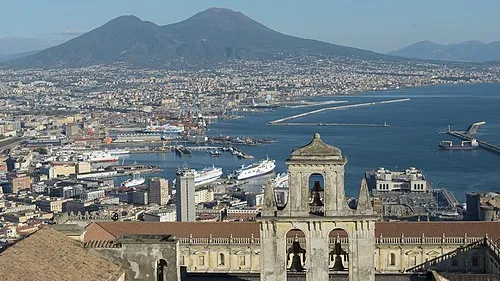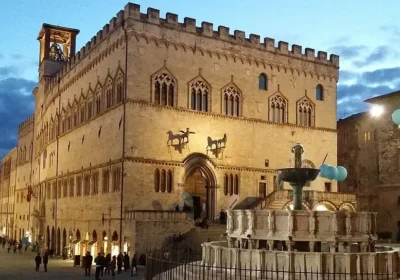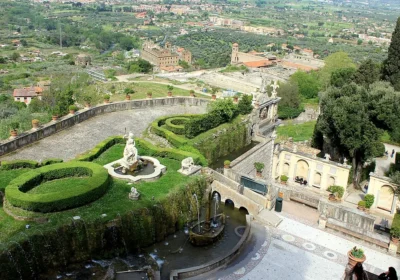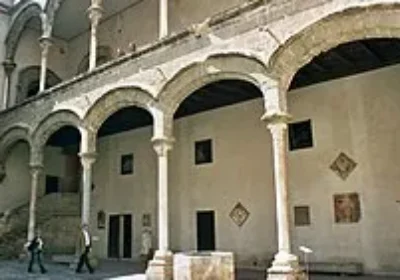Sunny, brightly coloured Naples is on the one hand a typical Italian city of pizza, football, noisy festivals and cheerful, friendly, slightly inconsiderate Neapolitans, and on the other hand a place with a very special flavour that is evident in everything.
Naples is not only the birthplace of organised crime and pizza (and they say that “genius and villainy are two things that don’t mix”), but also a beautiful beach resort and a place with a great atmosphere. This atmosphere is given by its many attractions.
So, the city at the foot of the famous Vesuvius is a museum and a resort two in one. From the excavations on the volcano’s slopes to the exhibits in the many local museums.
Naples’ historic centre is bursting with sights.
Miles of catacombs stretch beneath the city, where the walls breathe with history – not always happy, but always colourful: there are ancient churches, ancient tombs and simply the many corridors that once sheltered the locals.
On the tour you will see:
Piazza Municipio (Piazza Municipio) – this square of Naples, one of the largest in Europe and one of the most important in the city.
City Hall – it is housed in the Palace of San Giacomo, which began to be built in 1816.
Anjou Fortress – a castle erected by King Charles of Anjou on the seaside in Naples in connection with the transfer of the capital of his possessions from Palermo.
The Fountain of Neptune is a monumental fountain located in the Piazza Municipale.
Monument to Victor Emmanuel II – this monument was designed by Giuseppe Sacconi in an eclectic neoclassical style with elements of the Second Empire.
The Church of Santa Maria Nuova – The titular church was established on 17 March 1887.
Continue the tour (can be fully pedestrian or by car)
Piazza Jesus and Mary – this square preserves traces of different eras of Naples’ history.
The Gothic Church of Santa Chiara is a historical and architectural complex.
The Church of the New Jesus (Gesu Nuovo) is one of the most important and largest churches in the city, with a large concentration of Baroque paintings and sculptures.
The Spire of the Immaculate Virgin is a tall monument located in the very centre of the square, erected in the 18th century.
Via Benedetto Croce (Spaccanapoli, Naples Rift) – Naples’ ancient decumanus – The decumani in Naples are three streets stretching from east to west, laid out as early as the Greeks in the 5th century BC, developed under the Romans and surviving to the present day.
Piazza San Domenico Maggiore is a square in the historic centre of Naples. The square, bordered by mansions, is dominated by the Angevin-style church of San Domenico Maggiore.
Piazza del Trieste e Trento is one of the squares of Naples, located in the heart of the historic part of the city, near the seafront.
Theatre San Carlo is an opera house in Naples, the oldest opera house in Europe.
The Church of San Ferdinando is a historic church located in Piazza Trieste e Trento.
Café Gambrinus – a historic private café or coffee shop with an interesting history.
Via Toledo – the area between Vomero Hill and Via Toledo is called the Spanish Quarter.
Humberto Gallery is a public shopping gallery.
Piazza Plebiscita is the largest square, the heart of the city. Here in antiquity stood the Greek city walls and the castle of Lucilius.
The Royal Palace is the main residence of the monarchs of the Kingdom of the Two Sicilies of the Bourbon dynasty.
Basilica of San Francesco di Paola – Basilica, the main church of Naples, built in the IXX century by the King of Sicily.
Santa Lucia Promenade – A small promenade located east of Castello del Ovo, depicted in a famous painting by Sylvester Shchedrin.
The Fountain of Immacolatella, the Fountain of Chastity, is one of the most beautiful fountains in Naples.
Castello del Ovo is a medieval fortress on an island in the Tyrrhenian Sea, connected by a narrow embankment to Naples. It is believed that this is where the town was founded by Greek colonists in the 6th century BC.

















